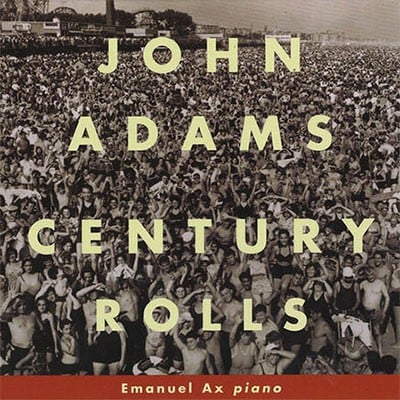2.picc.2.corA.3(III=Ebcl).bcl.3-4.4.3.1-timp.perc(3)-crot/marimba/
glsp/xyl/2susp.cym/wdbl/claves/SD/hi-hat/tpl.bls/cast/shaker/tamb/
tam-t/tgl/vib-harp-pft-sampler-strings
Sampler is Kurzweil K2000 or Akai. Alternative would be celesta or small electronic jazz organ.
This work requires additional technological components and/or amplification.
For complete technical specifications go to: mhgrey.wordpress.com
Abbreviations (PDF)
Boosey & Hawkes (Hendon Music)
Slonimsky’s Earbox was composed in 1995 on a commission from two orchestras: the Hallé Orchestra in Manchester, England and the Oregon Symphony in Portland, Oregon. The work is dedicated to Kent Nagano, conductor, longtime friend and a constant supporter of my music. Kent conducted the world premiere in September of 1996 in the new Bridgewater Hall in Manchester, England. The American premiere was conducted by James de Preist, another friend and proponent, who also presented the work the following year with the Boston Symphony Orchestra.
Slonimsky’s Earbox marked an important turning point in my orchestral music, coming as it did after a period of harmonic and contrapuntal experimentation that began with The Death of Klinghoffer and progressed through the Chamber Symphony and Violin Concerto. The new piece seems in retrospect to have pointed toward a successful integration of the older minimalist techniques (repetitive motifs, steady background pulse and stable harmonic areas) the more complex, more actively contrapuntal language of the post-Klinghoffer pieces. The model for this piece was the exploding first few moments of Stravisnky’s symphonic poem, Le Chant du Rossignol (The Song of the Nightengale). The way Stravinsky’s orchestra bursts out in a brilliant eruption of colors, shapes and sounds.What also attracted me was Stravinsky’s use of modal scales, a practice doubtless influenced by his Russian roots but which he abandoned soon after. I have long thought that the Russians–not only Stravinsky but composers like Scriabin and Tcherepnin–had begun something very important in their use of modal scales and harmonies, a direction that unfortunately was overwhelmed by more prestigous practices such as Neoclassicism and Serialism.
Another Russian, Nicholas Slonimsky, who was best known in this country as being the witty author of several books on music, had in 1947 compiled an exhaustive compendium of scales and melodic patterns (i.e. modes) called The Thesaurus of Scales and Melodic Patterns. Slonimsky was a character of mind-boggling abilities. He had a completey eidetic memory and could recall with absolute precision the smallest detail of something he’d read forty years before. He lived to be over a hundred, and his century spanned Czarist St. Petersburg where he was educated as a child to Santa Monica, California, where he lived into the 1990’s and where I’d come to know him. His autobiography, "Perfect Pitch", stands alongside Berlioz’s memoirs as one of the few genuinely original literary works about music.
The "Slonimsky" in my title not only memorializes his wit and hyper-energetic activity, but it also acknowledged my great debt to his thesaurus, whose scales and resulting harmonies have had a singular impact on my music since the Chamber Symphony of 1992. "Earbox" might be a word worthy of Slonimsky himself, a coiner who never tired of minting his own.
Reproduction Rights:
This programme note can be reproduced free of charge in concert programmes with the following credit line:
reprinted with kind permission of www.earbox.com

Hallé Orchestra/Kent Nagano
Nonesuch 7559796072

